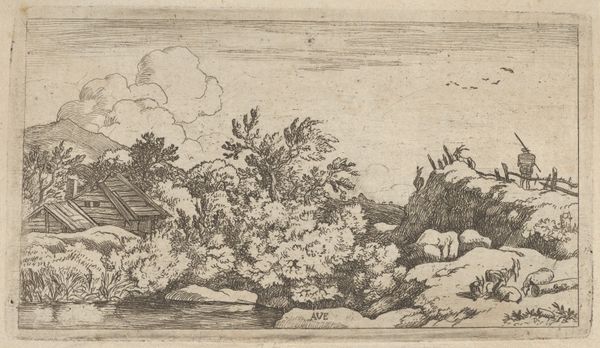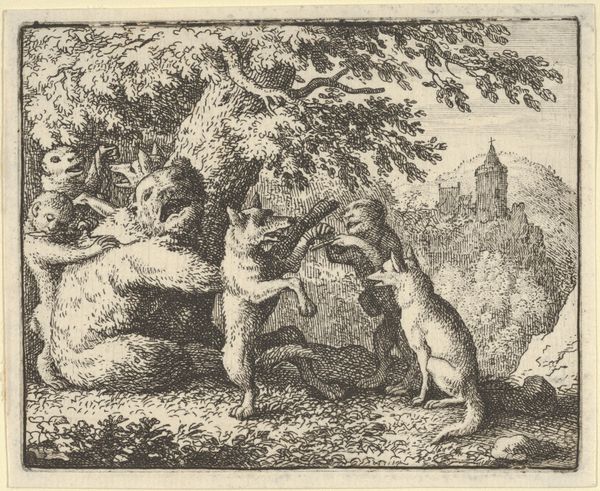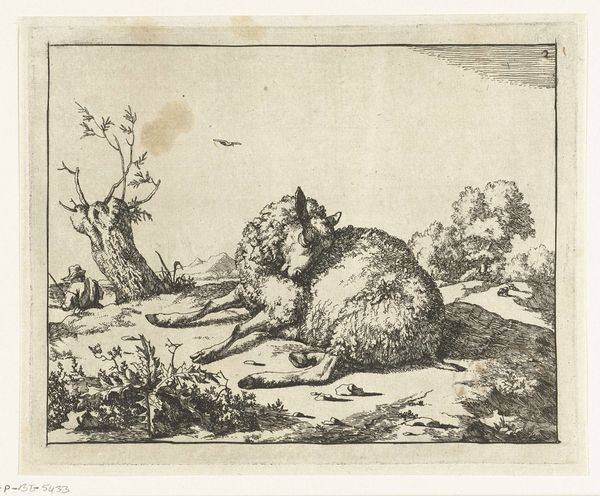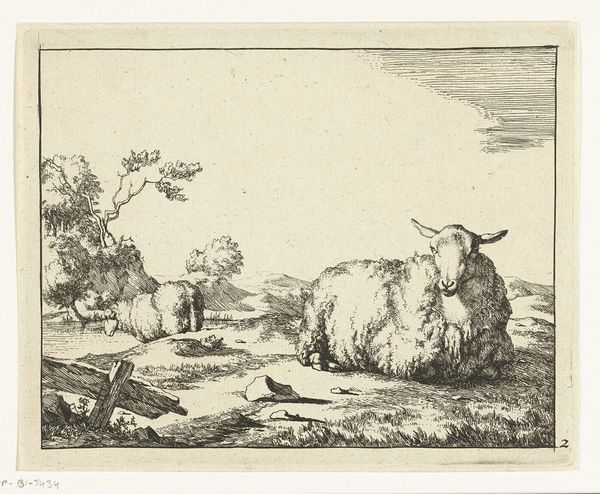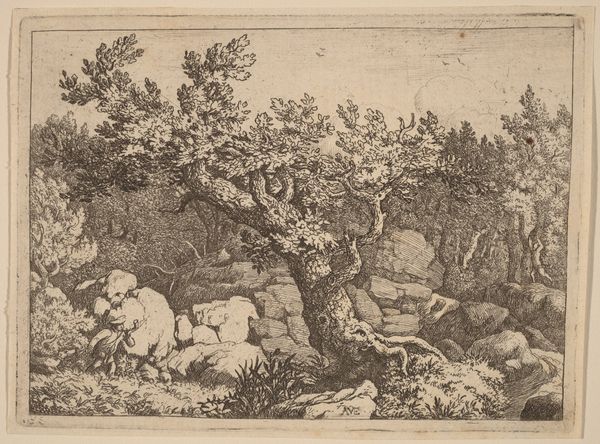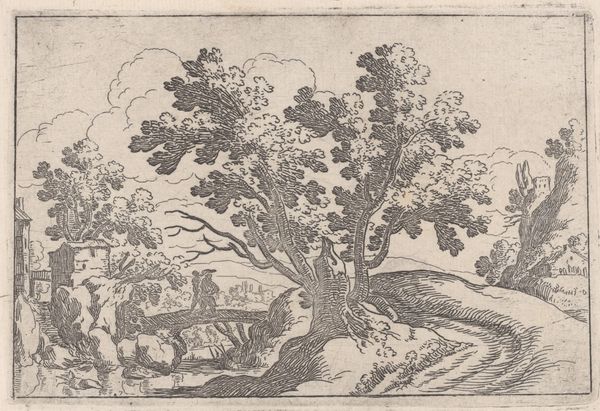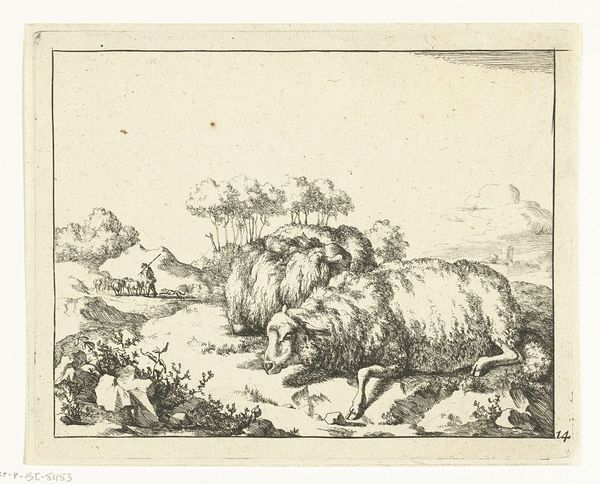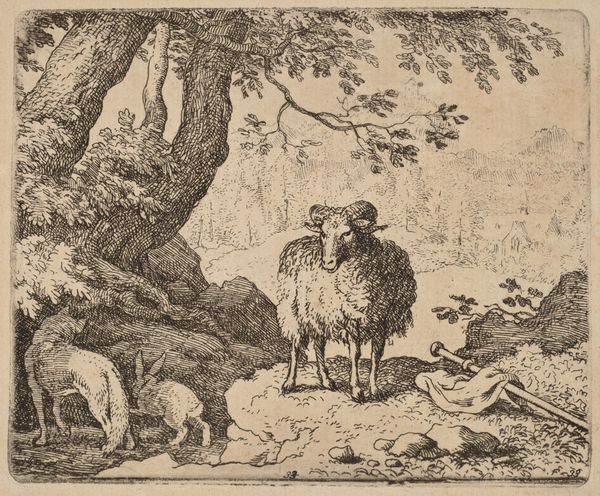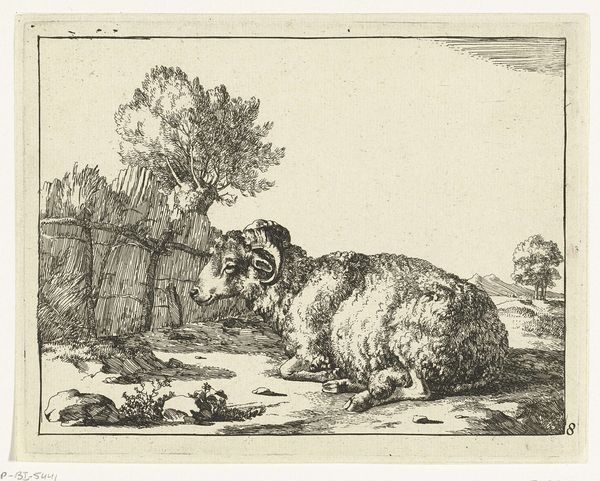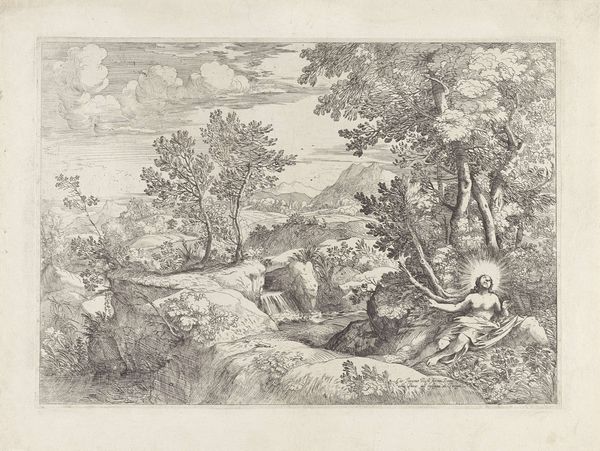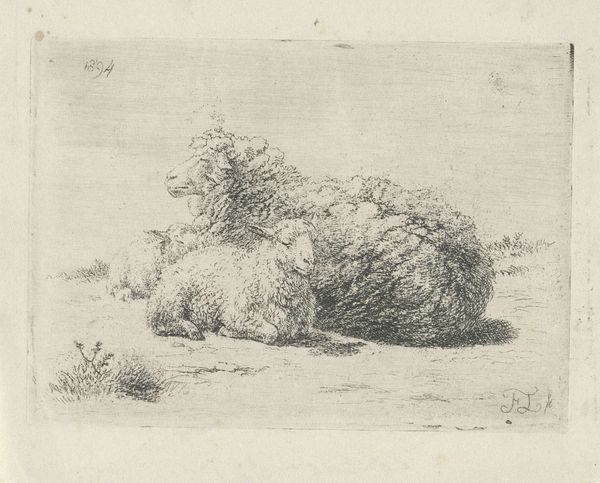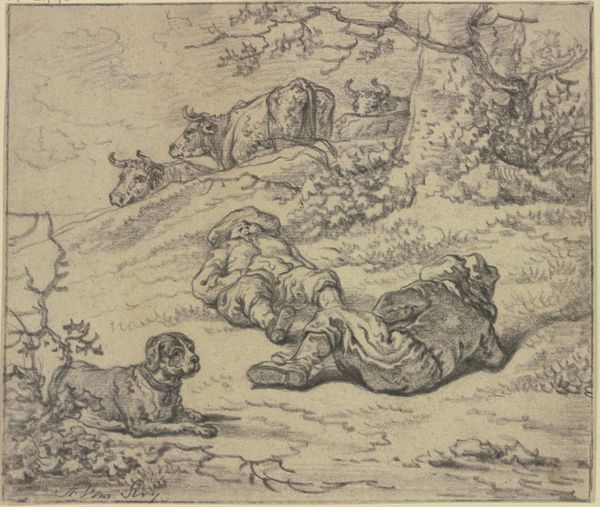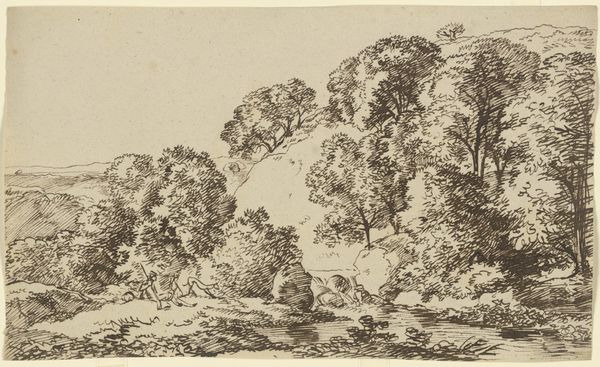
drawing, print, etching
#
drawing
#
dutch-golden-age
# print
#
etching
#
landscape
Dimensions: plate: 2 15/16 x 3 7/8 in. (7.4 x 9.9 cm) sheet: 3 1/4 x 4 1/4 in. (8.2 x 10.8 cm)
Copyright: Public Domain
Editor: Here we have Adriaen van de Velde's "Two Recumbent Sheep," an etching from 1670. I’m struck by the incredible detail in the wool – you can almost feel its texture. How would you approach analyzing this piece? Curator: As a materialist, I immediately consider the sheep themselves: their wool, their bodies – resources mobilized in a pastoral economy. This etching allows for a mediation between rural production and urban consumption in the Dutch Golden Age. Consider the labor involved in raising these animals, shearing them, and processing the wool. Van de Velde's etching, then, is more than just a pleasant scene; it’s a document hinting at these material processes. What does this say about value of "art" vs commodity? Editor: So, you're suggesting it reflects on the wider economic systems linked to the production of wool? How does the etching technique itself factor into this? Curator: Exactly. The etching process itself – the copperplate, the acid, the printing press – speaks to a developing industrialization. Reproducing this image allows for its broad dissemination. These sheep enter a visual economy, decoupled from the fields and farms. We can read the detailed rendering as an implicit acknowledgement of the skills – and therefore labor - required of those participating in production and distribution of luxury goods. What audience was this made for, and where might it have been displayed? Editor: That's a fascinating way to think about it. I hadn’t considered the etching itself as part of that whole chain of production. I guess I tend to focus on subject more than on the means. Curator: Think of this: the material choices – the copper plate, the ink – speak to class and access. The existence of this print allows you and I to stand here today. Editor: I see your point. Now, thinking about it as a material object connecting to broader networks of labor really deepens my understanding. Curator: Mine too. Sometimes it's easy to forget how materials impact our world today.
Comments
No comments
Be the first to comment and join the conversation on the ultimate creative platform.
